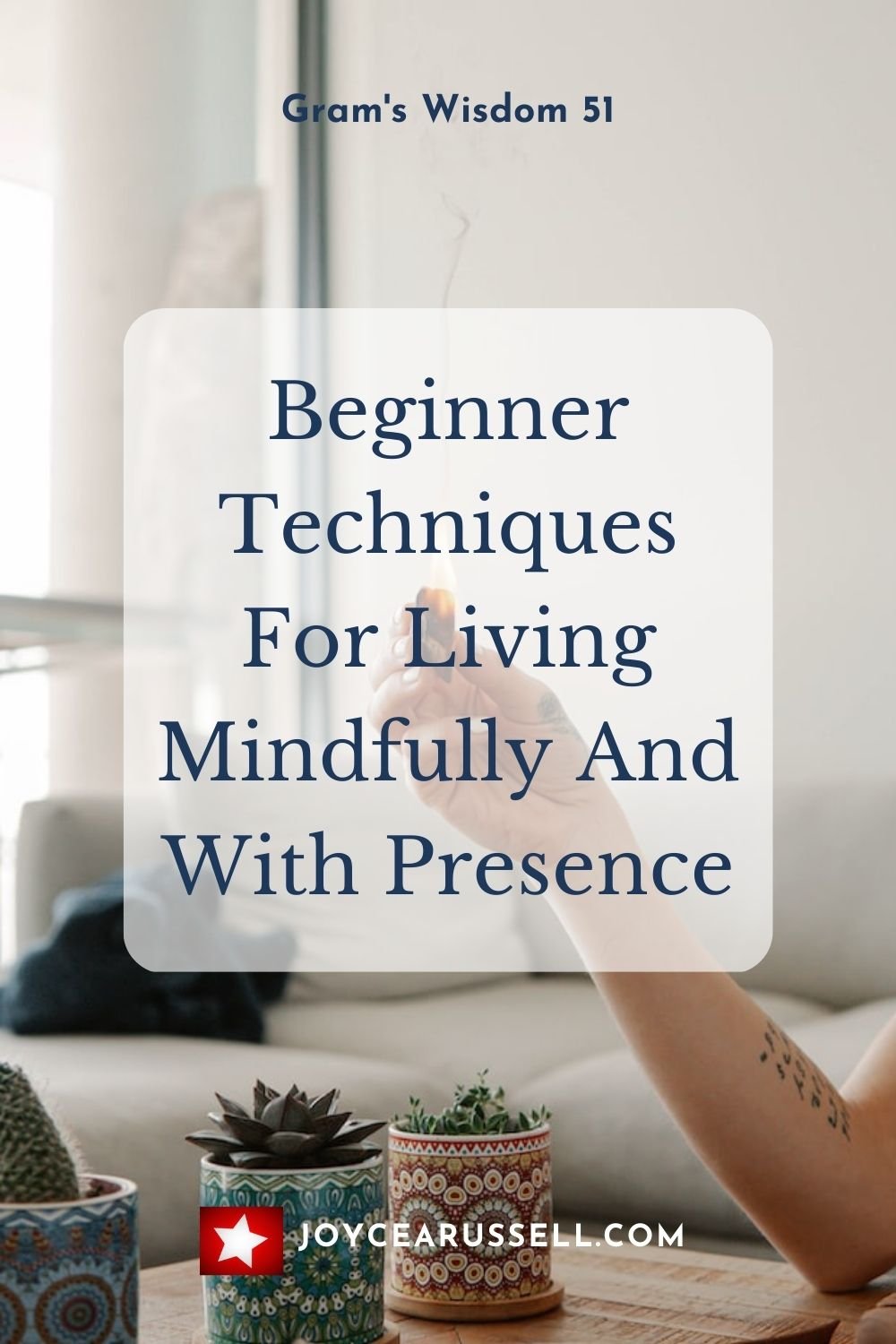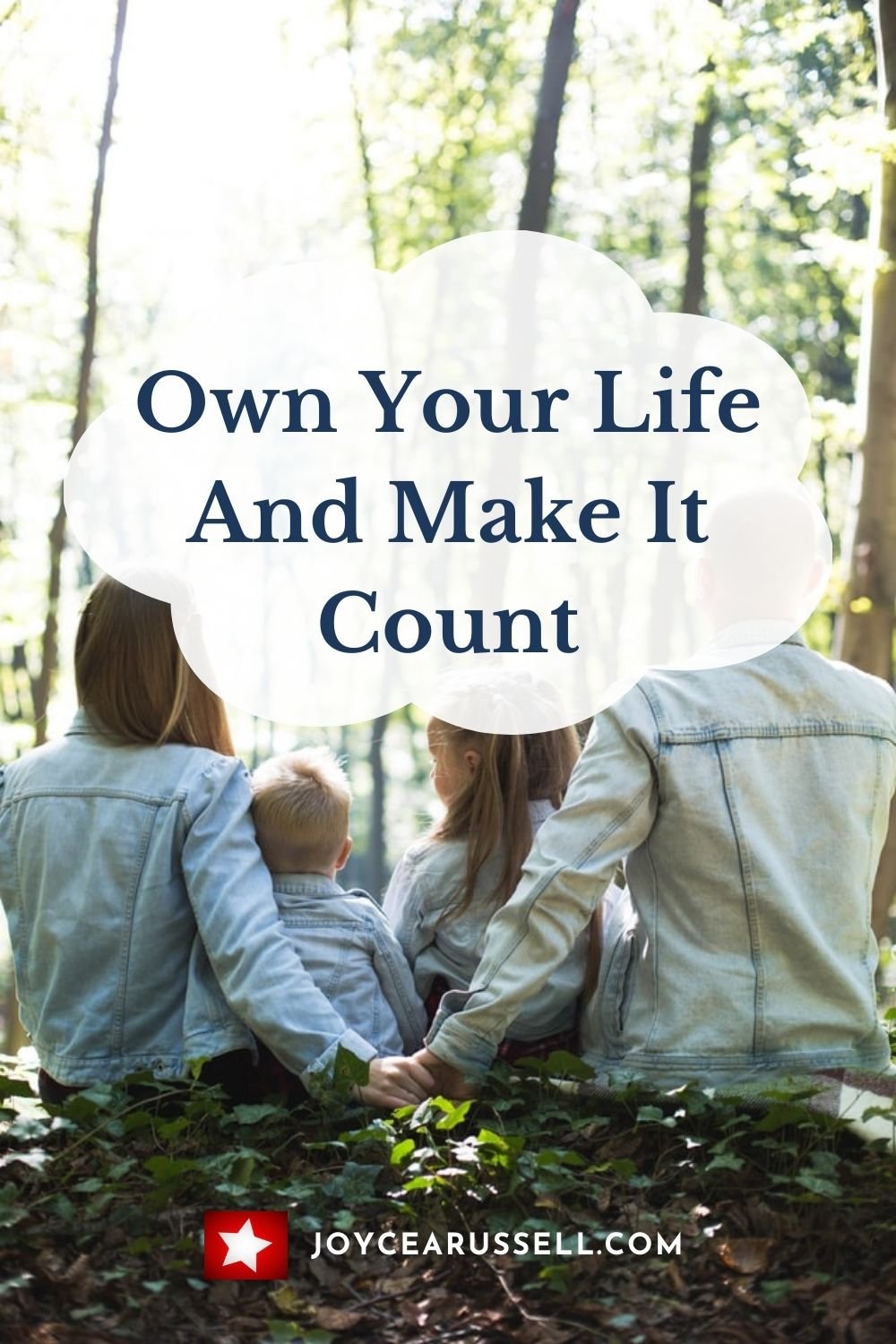Gram’s Wisdom 59:
My Gram wouldn’t have heard/known the term mindfulness, yet she lived her life in a mindful way. She was in touch with her surroundings, in touch with herself, and in touch with people. Gram always found time to go outside take a walk and listen while the earth and nature spoke. If I was having a particularly bad day, I was told to shut my eyes, take a deep breath, and try to see myself differently. Gram told me once that there was no better way to learn something new than to have simple conversations with others.
If you have made the decision to be more mindful in your daily life but aren't exactly sure where to start, you have come to the right place! Below are ten practices you can adopt to make practice easier.
1) Observe new distinctions.
Mindfulness is a powerful practice that invites you to engage with the present moment in a way that goes beyond mere existence. One key aspect of mindfulness involves actively observing new distinctions. Picture it like tuning into the subtle details of your surroundings, emotions, or your thoughts. When you make a conscious effort to notice the nuances and distinctions in your experiences, a remarkable change occurs. It's like seeing the world with fresh eyes, discovering the beauty in the ordinary. This intentional observation enriches your understanding of the present and brings about a rush of positive effects. The more you explore your daily life, the more you find to appreciate and savor.
Moreover, actively observing new characteristics heightens interest in your life. It's like turning the pages of a captivating book, eager to discover what happens next. By paying attention to the details, you become an active participant rather than a passive spectator in the narrative of your existence. This increased engagement with the present moment deepens your connection to life and opens the door to greater fulfillment. Embrace mindful observation, seek out the subtleties that make each moment unique, and cultivate a more enriched and meaningful life experience.
2) See in yourself a “work in progress.”
Shifting your perspective is another crucial aspect of mindfulness that can significantly impact your well-being. Often, you get caught up in the pursuit of a specific outcome, whether it's acing a project, achieving a fitness goal, or mastering a new skill. However, the magic lies in enjoying the process rather than fixating on the result. When you savor the journey, every small step becomes a victory, and the overall experience becomes more rewarding. It's akin to appreciating the brushstrokes on a canvas rather than obsessing over the finished painting. By embracing this mindset, you not only reduce stress and anxiety but also adopt a genuine sense of joy in your actions.
Furthermore, the way you perceive yourself plays a fundamental role in your mindfulness journey. When you’ve boxed yourself into rigid and negative labels, like declaring, "I am bad at art," you limit your potential. Viewing yourself as a fixed entity makes you susceptible to mindless thinking, and these negative thoughts can inadvertently manifest as self-fulfilling prophecies. Instead, acknowledge that, like a piece of clay, you are ever-changing and malleable. Embracing this flexibility allows you to break free from self-imposed limitations.
3) Examine paradoxes.
Delving into the scope of paradoxes offers a unique pathway to personal growth and resilience. Actively paying attention to these seemingly contradictory aspects of life enables the development of a profound skill: the ability to accept and tolerate ambiguity. Life is intricate, filled with situations that may appear contradictory at first glance, but exploring these paradoxes helps you navigate the nuances with grace. As you become more skilled at accepting ambiguity, the anxiety often associated with uncertainty begins to subside. It's like learning to dance through the uncertainties of life rather than feeling paralyzed by them.
Additionally, this practice of actively considering paradoxes extends beyond external circumstances and becomes a valuable tool for self-discovery. Recognizing the paradoxes within yourself is a transformative process. It involves admitting the complexities that make you uniquely human—your strengths alongside your vulnerabilities, your successes connected with your challenges. By shining a light on these internal paradoxes, you encourage a deeper sense of self-awareness. This self-awareness allows you to make more intentional choices and furthers a greater understanding of your motivations and behaviors.
4) Add humor to mindfulness.
Laughter, often hailed as the best medicine, carries with it a profound connection to mindfulness. Humor has a remarkable way of prompting us to step back and view situations from unexpected angles. It's like a mental gymnastics routine that nudges you out of your habitual thought patterns, encouraging a fresh perspective. When you find humor in your life or situations, you're essentially engaging in a form of mindfulness. It's not just about the punchline; it's about the mental agility required to recognize the unexpected and appreciate the lightness amid life's complexities. By tapping into this humorous mindset, you become more resilient and better equipped to navigate challenges with a sense of playfulness and optimism.
Also, the ability to find humor in life contributes to a greater acceptance of your circumstances. Laughter serves as a tool in breaking down the barriers of resistance or frustration. It doesn't necessarily diminish the seriousness of a situation, but it provides a coping mechanism that allows you to approach challenges with a lighter heart. This acceptance is rooted in mindfulness, as it involves a sharpened awareness of the present moment and an openness to finding joy even in the face of adversity. Celebrate the therapeutic power of laughter, seeing in it a conscious choice to embrace the unexpected with a smile.
5) Consider other points of view.
Approaching a problem from various perspectives not only enhances problem-solving skills but also contributes to a greater sense of acceptance. When you limit yourself to a fixed interpretation of a situation, it becomes challenging to navigate and accept the nuances that may exist. Considering the viewpoints of different people opens a world of possibilities, making the problem more palatable. Here are some key points to highlight the benefits of embracing diverse perspectives:
Enhanced Problem-Solving: By considering various viewpoints, you tap into a collective pool of ideas and solutions, enriching your problem-solving approach.
Increased Empathy: Understanding different perspectives cultivates empathy, promoting a more compassionate and open-minded approach to problem acceptance.
Reduced Resistance: Embracing diverse viewpoints minimizes the resistance that often arises from rigid interpretations, making it easier to acknowledge and work through challenges.
Cultivation of Creativity: Diverse perspectives fuel creativity, encouraging you to think outside the box and explore innovative solutions to problems.
Facilitation of Learning: Engaging with different viewpoints is a learning opportunity, promoting personal and intellectual growth by expanding your understanding of various facets of a situation.
6) Choose positive alternatives to your problems.
In the face of challenges or undesirable outcomes, it's crucial to shift your mindset from mere problem recognition to one of potential growth. Every problem, no matter how daunting, possesses a silver lining waiting to be uncovered. Instead of dwelling on the negative aspects, ask yourself, "How can this problem contribute to my ongoing personal and professional development?" By reframing the situation as an opportunity for growth, you pave the way for a more resilient and positive perspective. Challenges are not roadblocks; they are bridges offering valuable insights and lessons that contribute to resilience and wisdom.
Each problem is the classroom, and you’re the student. What lessons can be taken away from the current predicament? Is there a skill to be honed, a perspective to be gained, or a strength to be discovered? Embracing problems as learning opportunities positions you as an active participant in your own life. Moreover, recognizing the potential for opportunity in every problem fosters a sense of curiosity and adaptability, converting what could be perceived as a disaster into an exciting adventure. The difference lies not in the problem itself but in how you choose to identify and engage with it.
7) Keep a joy collection.
Building a joy collection is like curating a treasure trove of happiness readily available whenever you need a mood boost. This collection can take various forms, from written paragraphs vividly describing joyful moments to an assortment of photos capturing those special times. The key is to make these memories easily accessible, creating a go-to source of positivity. In the hustle and bustle of life, it's all too common to get caught up in the challenges and setbacks, inadvertently overlooking the reservoir of joyous experiences that shape our lives.
The significance of reflecting on positive moments has been shown to elevate your positive mental state. Your joy collection serves as a personal archive of happiness, reminding you of the laughter, accomplishments, and simple pleasures that have graced your journey. Whether it's revisiting the description of a cherished memory or flipping through photos that encapsulate moments of pure joy, your joy collection becomes a powerful tool for cultivating gratitude and maintaining a brighter outlook on life.
8) Create a mindful journal.
Beginning or concluding your day with the practice of documenting significant events adds a touch of mindfulness that can profoundly impact your overall well-being. This routine not only helps in reflection but also in cultivating a heightened awareness of your experiences. Here are several examples to consider as you embark on this mindful journaling journey:
1 | Expressing Gratitude: Jot down moments that made you feel grateful during the day, whether they were small gestures or significant events.
2 | Achievements and Milestones: Document your accomplishments, whether big or small, celebrating your progress and recognizing your efforts.
3 | Challenges Overcome: Note instances where you faced challenges and successfully navigated through them, highlighting your resilience.
4 | Acts of Kindness: Record both the kindness you received and the kindness you extended, fostering a sense of connection and goodwill.
5 | Beautiful Sights or Sounds: Capture the beauty in your surroundings, from a breathtaking sunrise to the soothing sounds of nature.
6 | New Learnings: Write about insights gained or lessons learned during the day, fostering continuous personal growth.
7 | Reflections on Challenges: Explore your thoughts and emotions surrounding challenges, fostering a deeper understanding of your responses.
8 | New Perspectives: Consider events from different angles, noting any shifts in your perspective and understanding of situations.
The mindful reviewing of these entries promotes a more conscious and appreciative approach to life.
9) Engage in mindful exercise.
Engaging in physical activities like walking, biking, or weightlifting provides an excellent opportunity to cultivate mindfulness in your daily routine. As you embark on these activities, take a moment to immerse yourself fully in the experience. Feel the rhythm of your footsteps or the resistance of the weights, notice the sights around you, and breathe in the scents of your surroundings. This heightened awareness not only deepens your connection to the present moment but also tunes you into the messages your body is sending. By consistently practicing mindfulness during these activities, you develop a familiarity with the mental state, making it more accessible in other aspects of your life. This carries over into decision-making as the clarity and presence cultivated through these physical practices lay a foundation for making more intentional choices in various areas of your life.
10) Change up your routine.
Venturing into the realm of the unfamiliar by trying new things is a deliberate approach to staying mindful and invigorating your daily routine. It's the small, intentional deviations from the norm, such as choosing a different place to sit, taking an alternate route home, or exploring a new restaurant, that inject a sense of novelty into your experiences. These seemingly minor acts disrupt your habitual patterns and, in turn, prompt you to be fully present in the moment. The world becomes a canvas of possibilities when you break away from the usual, allowing you to notice details that might have gone unnoticed in your routine. This practice extends beyond the physical realm, as it encourages you to adopt a fresh perspective on life, reminding you that every experience, no matter how small, holds the potential for newfound awareness and appreciation.
My final thoughts.
As with so many things in my life I have my Gram to thank for the beginning of a lifelong mindfulness practice. She always said that life was a gift and that it needed attention. So, each year I pay a little more attention because I believe life is a miracle, and it should not be wasted.
Thank you for reading this post, I hope you have enjoyed it.
For more information, check out these posts.













